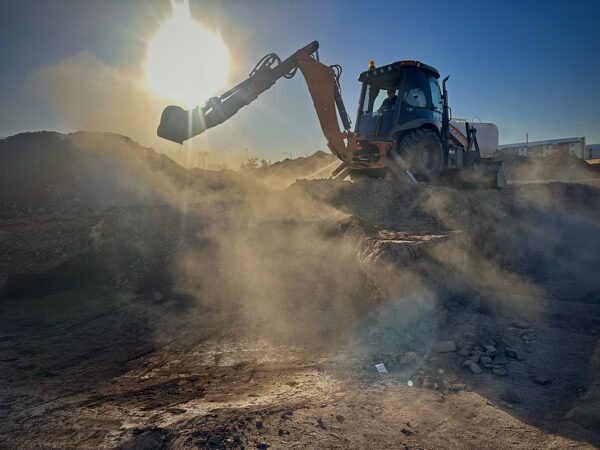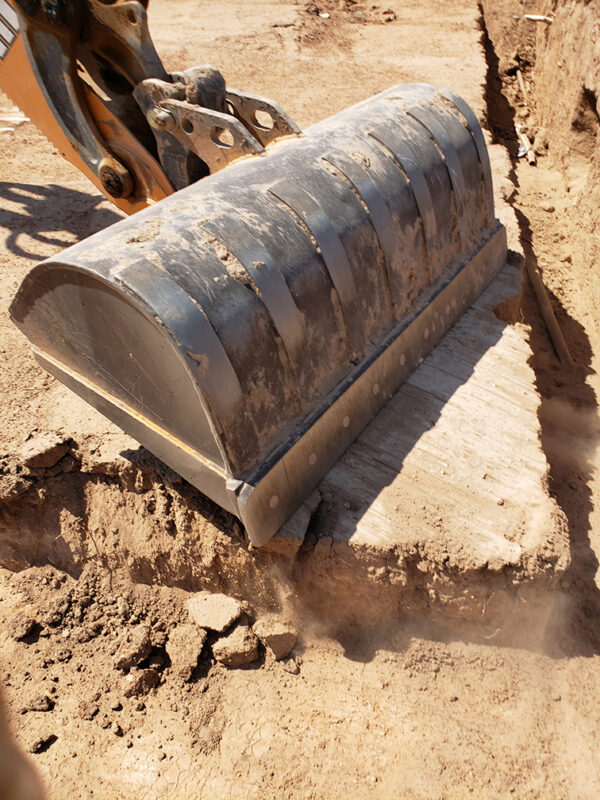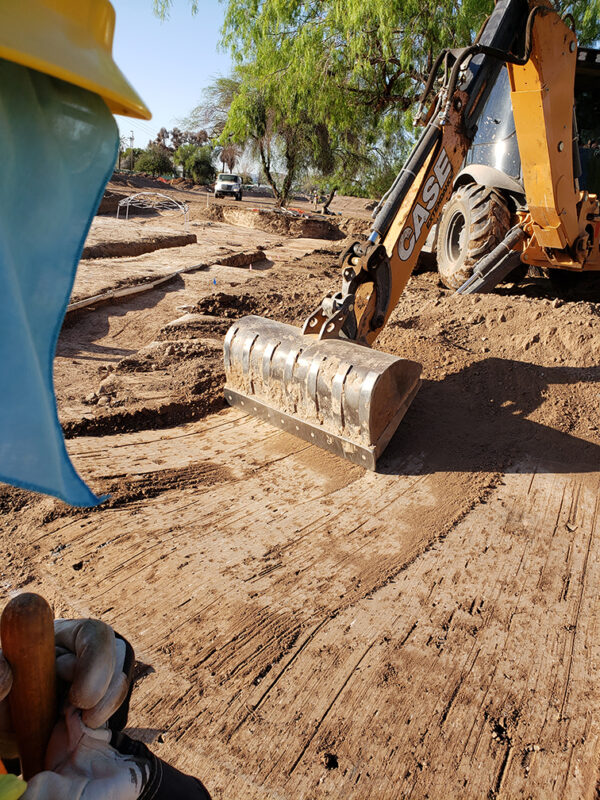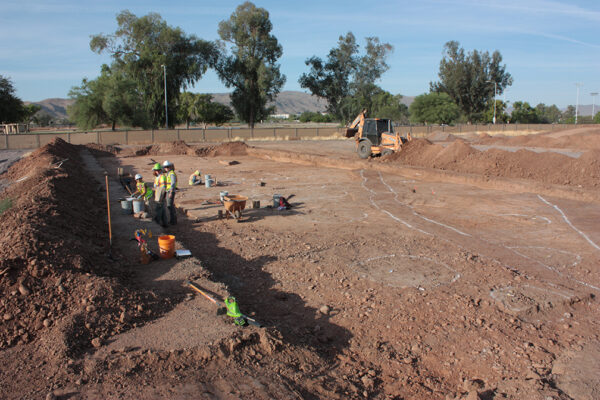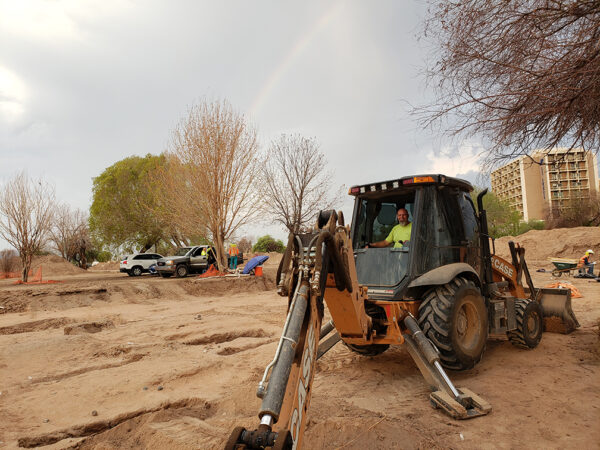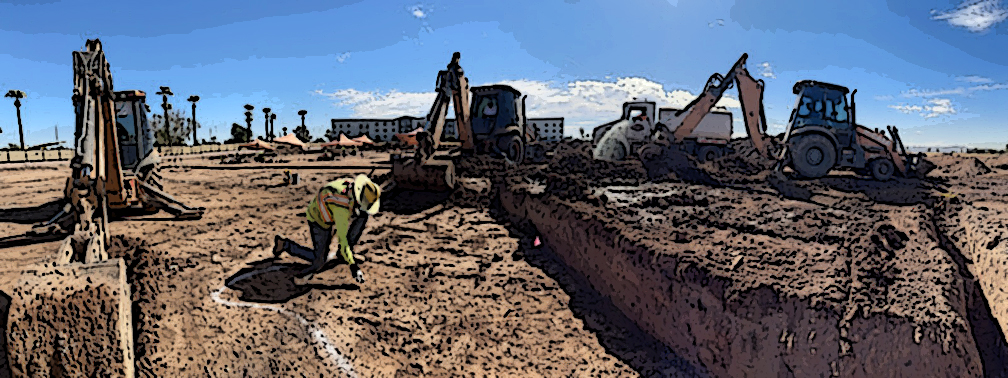
The Unsung Workhorse of Modern Archaeology
Project director John Marshall praises the big piece of equipment non-archaeologists may be surprised to learn about. Click on any photo for a lovely larger view.
When most people think of an archaeological excavation, they probably think of minute detail work. They think dental picks and fine brushes. While those are used at times, their application is actually pretty limited. A favorite saying among field archaeologists is: “Use the biggest tool possible for the job.” The reality is that this usually means picks and shovels, and of course the all-purpose hand trowel. Even more so, the biggest tool for the job, particularly in the early stages of excavation, is the backhoe. Its contribution to archaeology is tremendous.
The ability of heavy equipment to move dirt far surpasses the human capability. One inherited piece of wisdom useful for planning excavations states that an archaeologist can move a cubic meter of dirt a day, that is a 1-m by 1-m unit dug 1-m deep. For dry soil, this roughly correlates to a metric ton, with moisture only increasing the weight. In contrast, a backhoe can move the equivalent amount of dirt in minutes. For example, using a straight-edged stripping bucket, a backhoe can excavate about 100 m2 a day to a depth of around 40 cm below ground surface. To excavate this 40 m3 area by hand would take 10 archaeologists at least 4 days to excavate. In a world with budgets and timelines, the choice of how to move a lot of dirt quickly is obvious.
Backhoes don’t just crudely move masses of dirt, however. The ability of a backhoe operator to skim off 1 or 2 cm of dirt to provide a clean look at subsurface deposits is invaluable. In the hands of a skilled operator, the backhoe functions as a giant trowel for archaeologists. When we’re monitoring a backhoe, we’re looking for soil color differences and sometimes subtle texture changes. These clues indicate the presence of subsurface features, which we can identify and mark for further investigation.

Adobe walls coming into view (light-colored L-shaped strip running diagonally from lower left to the center). Photo by Connie Darby.
The backhoe operators we typically work with also know a lot about archaeology. They may not know, though some do, things like phase names or specific pottery types. But they do know dirt and they’ve seen a lot of it. Many people can run a backhoe well, but the best operators also care a lot about the archaeology. It’s part of what makes them so good. Most of these operators have worked on many archaeological digs and know more archaeologists than archaeologists do. We may dig a few projects a year, if we’re lucky; they go from excavation to excavation all year, working with many different companies and archaeologists.
Unfortunately, the use of heavy equipment can sometimes be destructive. It’s just a fact of doing archaeology. While we try our best to be as careful as possible, inevitably things will get damaged, whether it’s digging with a dental pick, a trowel, a shovel, or a backhoe. However, it’s the age-old dilemma in archaeology—the trade-off between time and information. We could dig everything with dental picks, but the amount of information gained by that attention to detail would be minimal at best. In contrast, using heavy equipment sometimes results in damage, but the vast amount of information gained by being able to do much more work results in far greater potential for understanding past human behavior, which is our ultimate goal.


